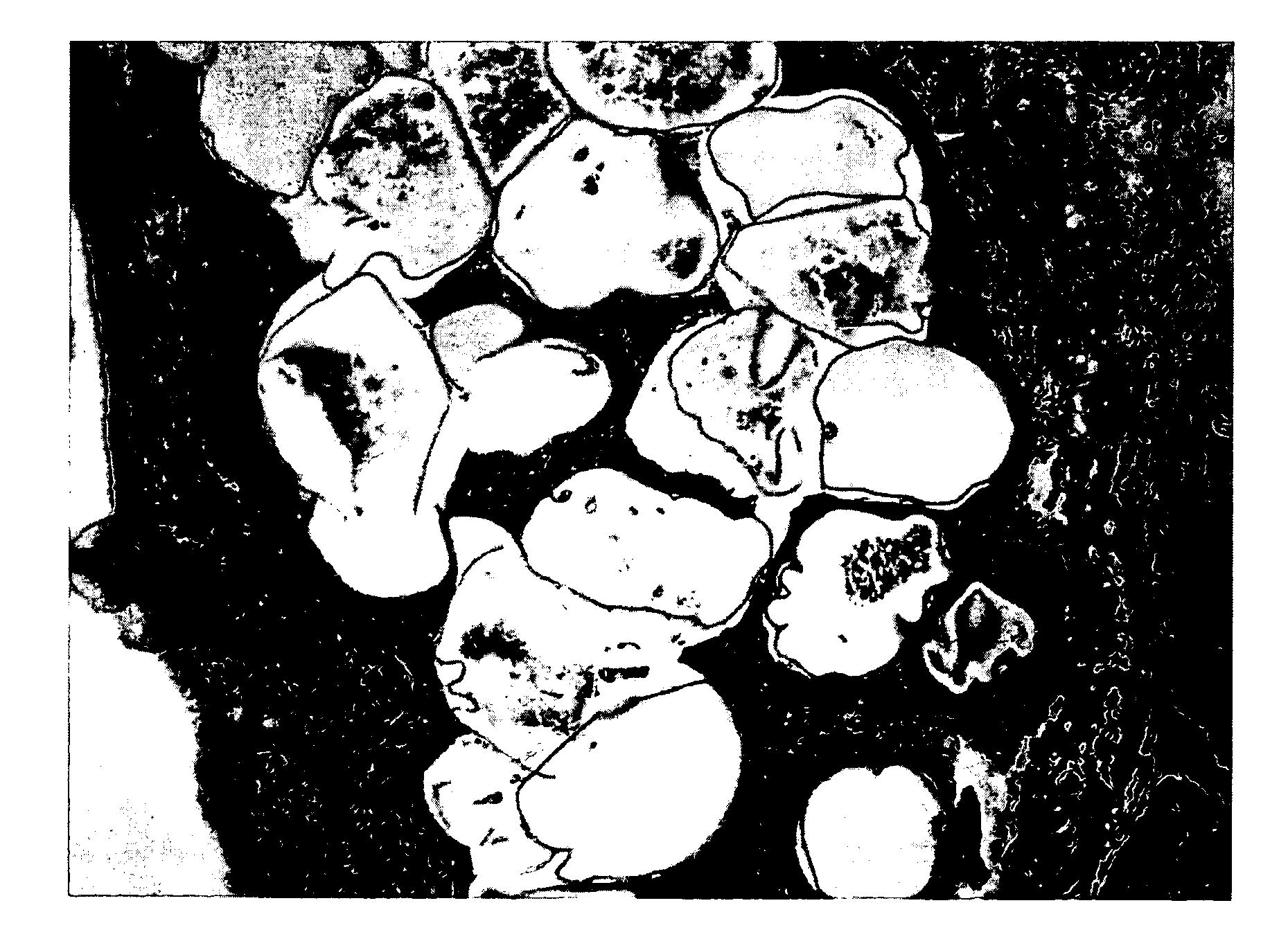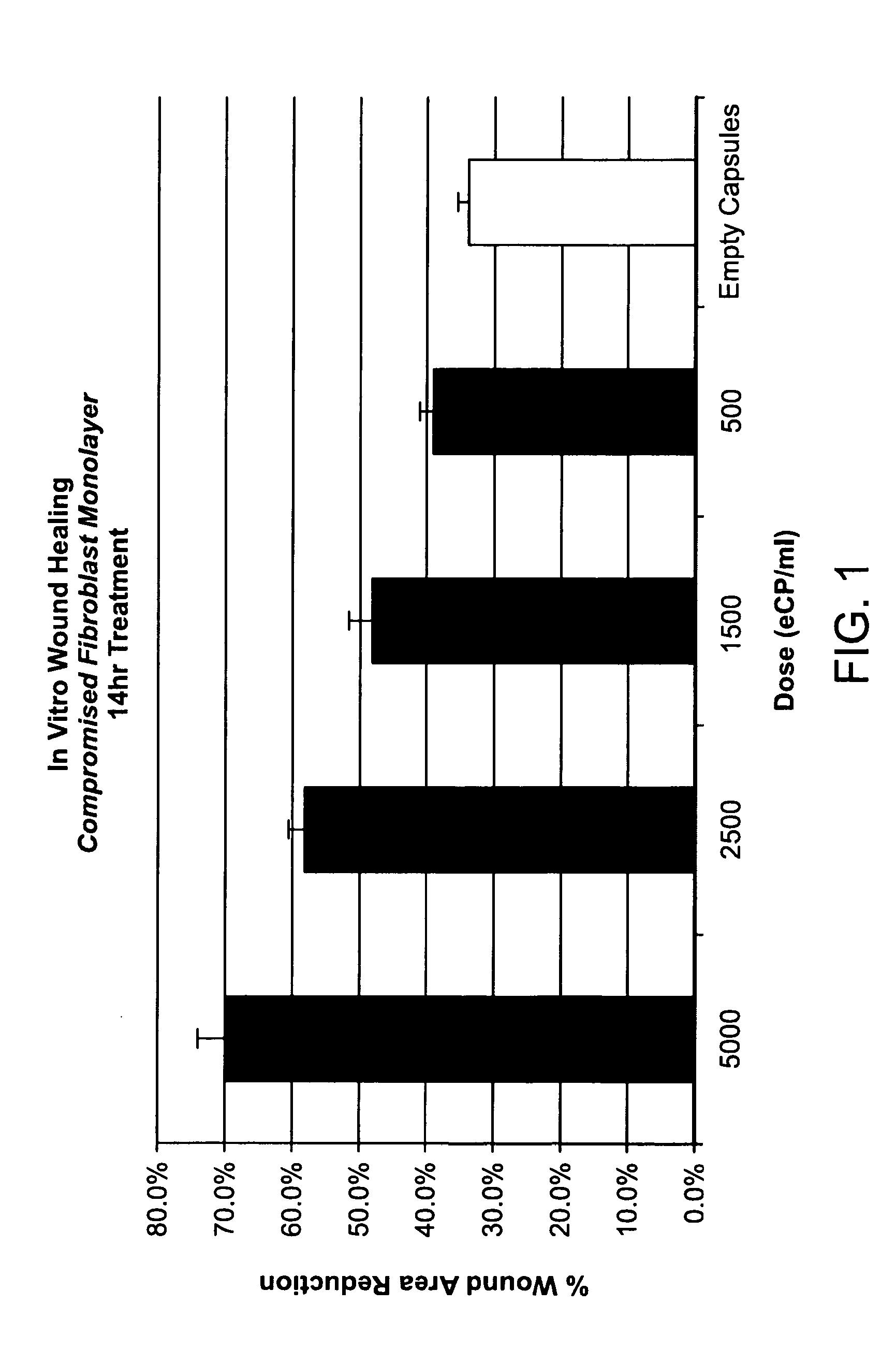Wound healing
a wound healing and composition technology, applied in the field of wound healing, can solve the problems of scarring and loss of original muscle function, loss of muscle tissue, infection and notoriously difficult to heal, etc., and achieve the effect of accelerating the wound healing process and reducing scarring
- Summary
- Abstract
- Description
- Claims
- Application Information
AI Technical Summary
Benefits of technology
Problems solved by technology
Method used
Image
Examples
example 1
Characterisation of the In Vitro Wound Healing Potential of Choroid Plexus Conditions Medium in Suitable Wound Models
[0153]Neonatal porcine choroid plexus, isolated from Yorkshire swine, was isolated and maintained in culture as previously described in Thanos et al8. After 7-10 days, choroid plexus clusters were encapsulated in alginate and held for another 7 days.
[0154]Monolayers of cell types relevant to wound healing were created in 6-well plates using standard tissue culture techniques to create previously described in vitro wound models. Adult human dermal fibroblasts or kertinocytes were grown to 95% confluency, whereupon the monolayer was physically disrupted with a specialised tool to create a defect on the order or 10-20 mm2. Following the creation of the defect, cultures were washed with HBSS, photos were taken for image analysis, and the appropriate basal medium was returned to the plate. In the first experiments, transwells were used to suspend CP-containing capsules (50...
example 2
Effect of CP Conditioned Media In Vitro
[0156]CP conditioned medium was collected for 96 hours after 7 days of culture of CP cell culture and then added to fibroblast culture medium. The therapeutic effect of CP conditioned media and fibroblast wound model is shown in FIG. 3. Each group containing conditioned media (CM) along with nutrients showed an improvement compared to the basal medium control. Significantly, CM is likely depleted of essential nutrients required to maintain healthy cell cultures, especially compared to a fresh fibroblast basal growth medium (FBM). Still, CM provided benefit in each condition, particularly those that supplement a minimal amount of nutrients.
example 3
Assessment and Optimisation of the Long-Term Production of VEGF (Indicator of Wound Healing Potential) in Cultures with Daily or 2 / Week Media Changes
[0157]Based on previous work demonstrating that the secretion of VEGF by CP was enhanced in serum-free endothelial growth media8, CP clusters were maintained in ENDO-SFM culture for up to 3 months for the continuous collection of therapeutic media for wound studies. In this process, an aliquot of most media collections was kept for VEGF analysis by ELISA. The results, shown in FIG. 4a demonstrate the long-term stability of VEGF secretion. Based on a minimum therapeutic dose of 2 ng / day, the equivalent dose production potential is shown in FIG. 4b, averaging about 25 doses produced each day by each donor pig CP. Importantly, this signifies that the issue of sourcing is exponentially reduced by choroid plexus secretory factors due to their robustness and stability in long-term cultures.
PUM
| Property | Measurement | Unit |
|---|---|---|
| Length | aaaaa | aaaaa |
| Density | aaaaa | aaaaa |
| Density | aaaaa | aaaaa |
Abstract
Description
Claims
Application Information
 Login to View More
Login to View More - R&D
- Intellectual Property
- Life Sciences
- Materials
- Tech Scout
- Unparalleled Data Quality
- Higher Quality Content
- 60% Fewer Hallucinations
Browse by: Latest US Patents, China's latest patents, Technical Efficacy Thesaurus, Application Domain, Technology Topic, Popular Technical Reports.
© 2025 PatSnap. All rights reserved.Legal|Privacy policy|Modern Slavery Act Transparency Statement|Sitemap|About US| Contact US: help@patsnap.com



